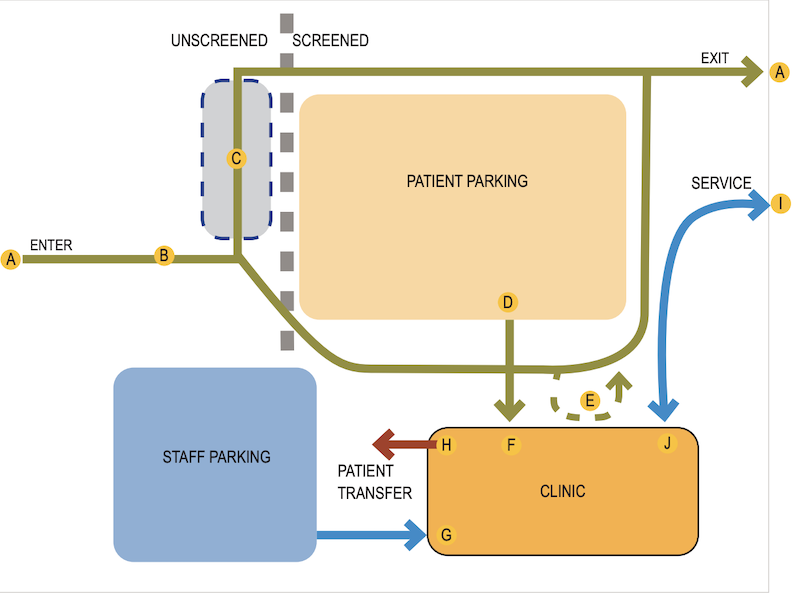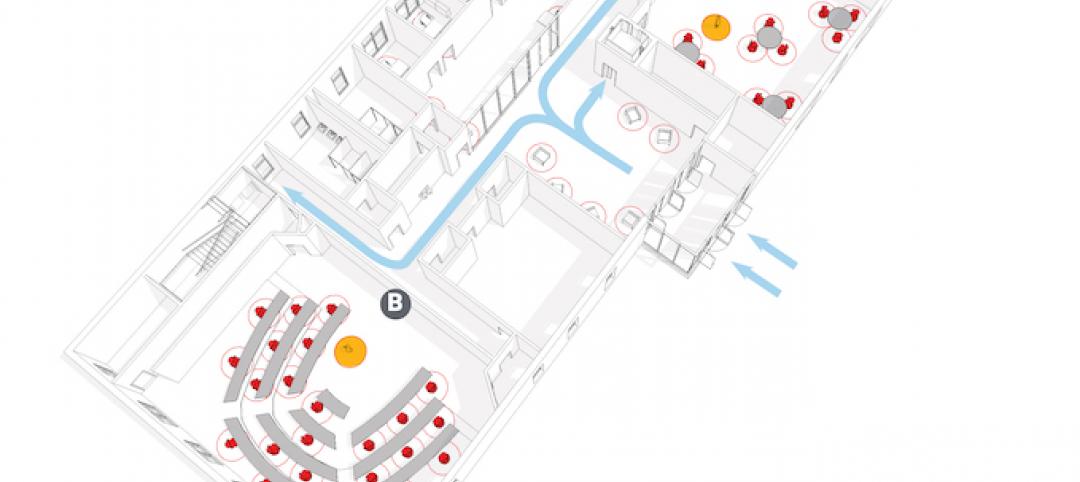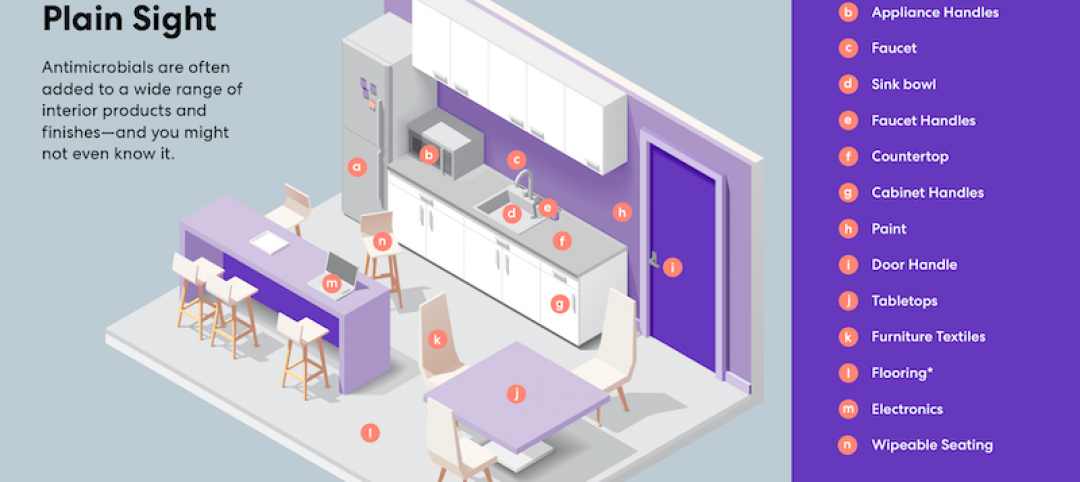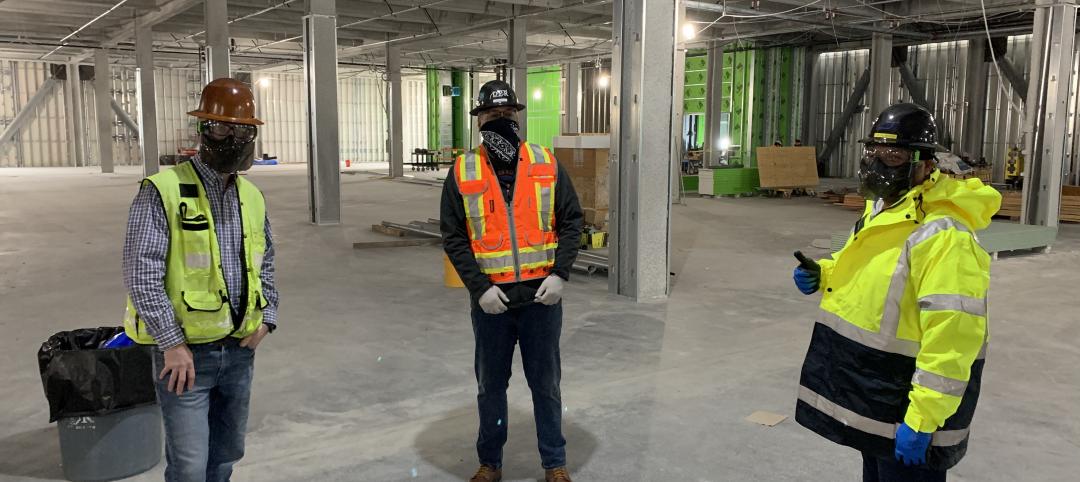Eppstein Uhen Architects (EUA) has released a 16-page guide that provides pandemic considerations for health facility design. The document focuses on four objectives:
1. Reducing patient presentations at facilities, with specific focuses on telehealth, site design and planning, and drive-through testing. For example, the guide’s considerations for reducing patient presentations include using the facility’s parking lot to manage who enters the building. It recommends a single point of entry and exit, a staffed gatehouse to direct and track patients (via smartphone technology), and drive-through services for pharmacies and labs.
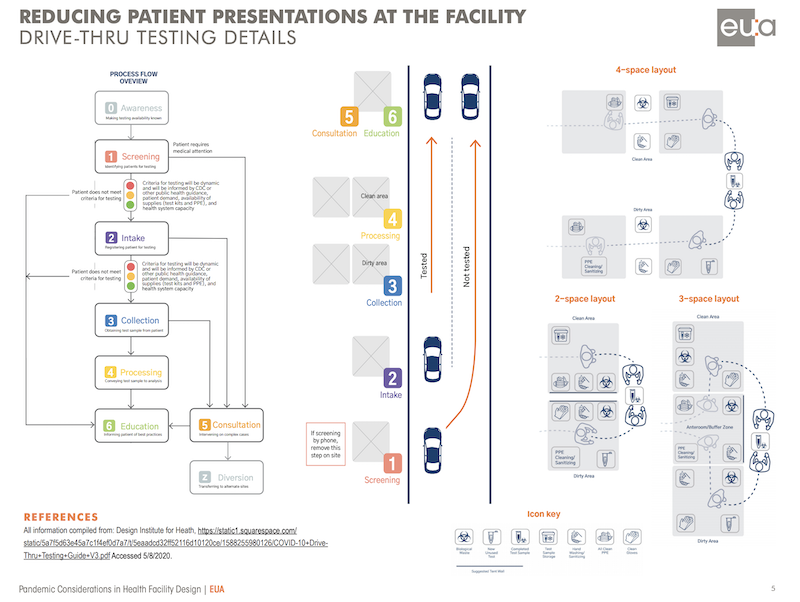 The guide emphasizes the importance of drive-through options for controlling who enters a healthcare building.
The guide emphasizes the importance of drive-through options for controlling who enters a healthcare building.
2. Isolating infectious patients, and how to prepare vestibules, entries, waiting rooms, and reception areas. The guide recommends larger vestibules to accommodate more functions and equipment, as well as temperature screening, physical distancing, and touchless entry supplemented by hand sanitizer stations and mask dispensers. Planning, the guide states, will also consider “placing a negative pressure multipurpose room adjacent to registration to isolate patients with symptoms of infectious diseases.
 Screening patients as they enter a building is imperative.
Screening patients as they enter a building is imperative.
3. Improving facilities’ ability to reduce the spread of infection. The guide makes specific planning recommendations for clinics, hospital lobbies, emergency departments, elevators, materials management, and restrooms. Triage areas at the front door will help sort well and unwell patients. One-way patient flow will ensure patients don’t cross paths with potentially unwell patients who are entering the building.
For clinics, EUA favors a “library” model that includes community spaces (e.g., rooms for meetings and group therapies, physical therapy, or for staff break rooms) with access to the building’s main entrance. During a pandemic, a community space would be converted to serve as a buffer between screened and unscreened patients.
 The guide recommends one-way traffic so that well and unwell patients don't intersect.
The guide recommends one-way traffic so that well and unwell patients don't intersect.
4. Providing surge capacity for high-volume episodes. The guide offers considerations for separating infected patients, providing separate entrances, ventilation (including providing a negative pressure relationship in the infectious side of the unit), and repurposing lower-acuity patient care spaces for increased patient beds.
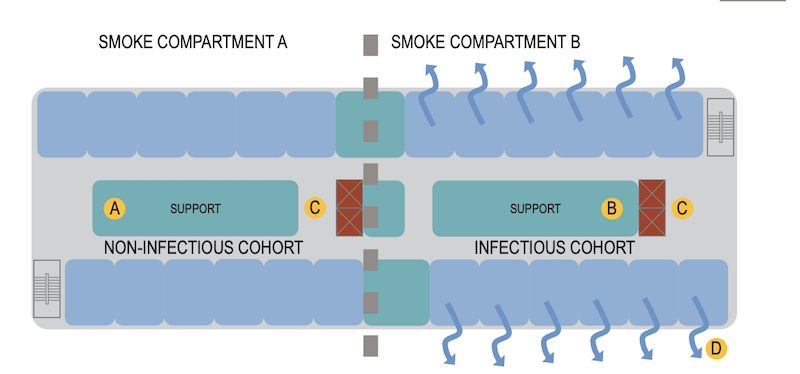 This diagram of an inpatient nursing unit shows how strategies can be employed to separate non-infectious and infectious patients in the same bed unit.
This diagram of an inpatient nursing unit shows how strategies can be employed to separate non-infectious and infectious patients in the same bed unit.
“Planning a building that seeks to fully address all aspects of operations during a pandemic is a major undertaking,” the guide concedes. Therefore, “it is important to be intentional about the decisions each organization makes around pandemic planning for each project.”
Related Stories
Coronavirus | Jun 14, 2020
A new report on how campus buildings can reopen safely
Leo A Daly white paper suggests dividing students into smaller “cohorts,” and assigning bathroom spaces.
Coronavirus | Jun 12, 2020
BD+C launches 'The Weekly,' a streaming program for the design and construction industry
The first episode, now available on demand, features experts from Robins & Morton, Gensler, and FMI on the current state of the AEC market.
Coronavirus | Jun 9, 2020
Going viral: How the coronavirus pandemic could change the built environment
Architecture and construction firms—and their clients—are asking new questions about infection control as it pertains to people assembly, building wellness, and technology.
Fire and Life Safety | Jun 9, 2020
NFPA develops business reopening checklist for fire and life safety measures
The new checklist helps building owners and facility managers ensure fire and life safety as businesses prepare to re-open amid the coronavirus pandemic.
Coronavirus | Jun 9, 2020
CannonDesign unveils COVID Shield
As the world evolves its response to the COVID-19 pandemic, one clear reality is testing for the virus will be part of our daily lives for the foreseeable future.
Coronavirus | Jun 5, 2020
3 strategies to improve the wellness of building systems and gain tenant trust
Three operational issues that must be prioritized for every building in order to achieve tenant trust are air quality/ventilation, relative humidity, and building commissioning.
Coronavirus | Jun 2, 2020
5 ways to improve hand washing and minimize germs in public restrooms
Bradley Corp. offers five upgrades to make public restrooms more sanitary.
Coronavirus | Jun 2, 2020
Perkins and Will, Healthy Building Network advise against the use of antimicrobial building products
Even during a pandemic, antimicrobial building products may do more harm than good.
Coronavirus | May 30, 2020
A welcoming entry-point for wellness screening anywhere
Modular WorkWell™ ecosystem can process up to 40 people per minute.
Coronavirus | May 29, 2020
Black & Veatch, DPR, Haskell, McCarthy launch COVID-19 construction safety coalition
The NEXT Coalition will challenge engineering and construction firms to enhance health and safety amid the Coronavirus pandemic.


